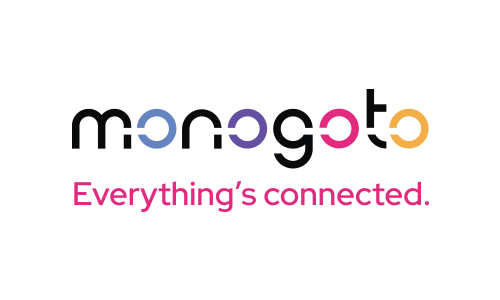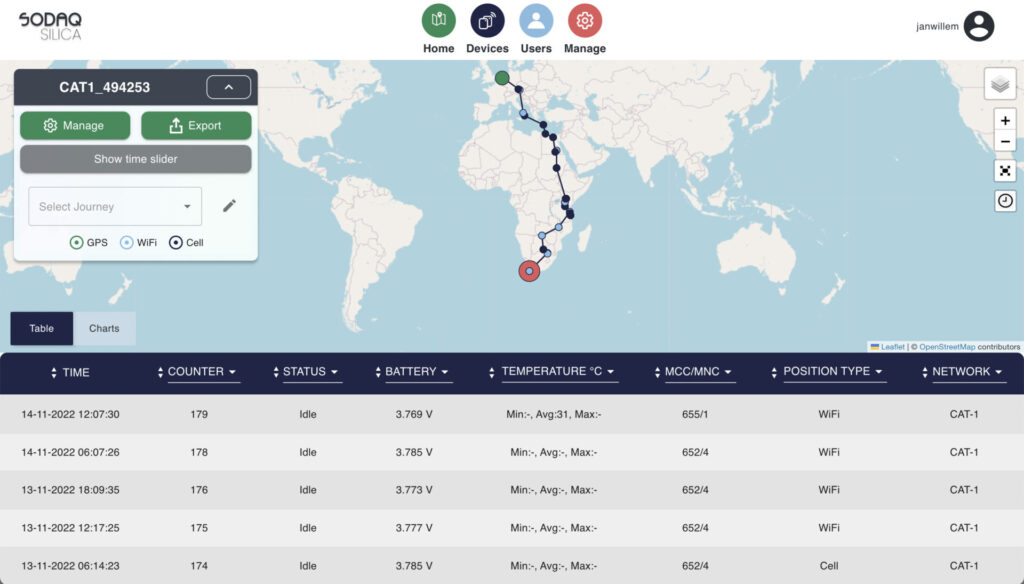PRESS RELEASE | HILVERSUM, MARCH 7, 2023 – In a successful live test conducted across Europe and Africa, SODAQ – a leader in low-power sensing and tracking solutions and Monogoto – a leading cloud-based cellular network provider, have demonstrated the feasibility of CAT-1 as a coverage solution for global connectivity, even in regions with low connectivity and insufficient technology infrastructure.
CAT-1 technology has been in development for years and its potential to revolutionize global connectivity has been long anticipated. SODAQ and Monogoto seized an opportunity to conduct a live test across Europe and Africa to demonstrate the feasibility of CAT-1 as a coverage solution for global connectivity. By equipping the small aircraft* with tracking devices showing the route traveled and reporting from each landing location, the partner organizations were able to successfully conduct the test. Understanding its potential, this achievement is an important milestone in the journey towards providing reliable, high-speed internet access to remote areas around the world.

Rolling out CAT-1 technology
At the Mobile World Congress in 2018, it was highlighted that LTE-M and NB-IoT have great potential and many countries have already started to roll out country-wide networks. However, for countries with limited IoT capabilities, it could take years to deploy these technologies and establish roaming contracts among providers. In addition, chip and module vendors have also noted that this is a contributing factor as to why sales of LPWAN modules did not meet original estimations. They have seen that LTE-CAT1, a ubiquitous technology used by Smartphones all over the world, could be tapped into and made more low-cost and low-power.
Tracking around the world
The airplane carried multiple SODAQ manufactured devices with the NINA/LENA series of U-blox and Monogoto connectivity, through which truly global tracking was demonstrated.
“The Monogoto global connectivity ensured reliable internet access even in the most remote locations, it simply worked everywhere” said Rosita Smeenk, Head of the expedition and
main pilot. Maor Efrati, Co-Founder & CTO at Monogoto added, “The world needs a connectivity solution that is truly global. It
is safe to say that today CAT-1 is well positioned to replace 2G
– it has the benefit of being efficient, with low power usage,
without the downside of CAT-M or NB-IoT coverage limitations”.

Visit Monogoto and SODAQ at the Embedded World Conference 2023 (booth 3-210) in Nuremberg, Germany, from March 14 until March 16 or book your meeting via sales@sodaq.com.
About Monogoto
Monogoto is the first ever private-public cellular cloud – Enabling public and private seamless connectivity for any project with global connectivity alongside private LTE/5G networks. Monogoto provides global Internet of Things (IoT) and machine-to-machine (M2M) connectivity using powerful APIs that enable enterprises and developers to design, build, manage, control and scale their IoT applications quickly and securely. Enterprises use the Monogoto platform to connect and control cellular-based sensors and devices, such as point of sales, ATMs, wearables, smart lights, fleets of cars and packages, and leverage its APIs to provide enhanced flexibility and capabilities like cybersecurity, procurement, and IT management. Visit Monogoto online at www.monogoto.io.
About SODAQ
SODAQ is a leader in low-power sensing and tracking solutions. Since 2012 the company has been a pioneer in the field of creating autonomous devices using low-power wide area networking and energy harvesting. SODAQ provides a range of asset tracking solutions for businesses as well as offering custom hardware, software and industrial design development as a service. With its mission to create world-friendly devices to solve complex global challenges, SODAQ is always working towards making a positive impact with the power of IoT. Learn more at www.sodaq.com.
—
* A special, external expedition aimed to cover 10 countries, following the Nile River through Egypt and Sudan, continuing towards the east African coastal region of Tanzania before heading further south to Mozambique, Malawi, Zimbabwe and Botswana and finally South Africa.